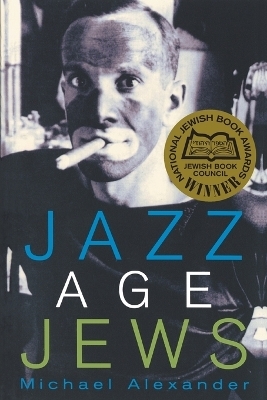
Jazz Age Jews
Princeton University Press (Verlag)
978-0-691-11653-2 (ISBN)
By the 1920s, Jews were--by all economic, political, and cultural measures of the day--making it in America. But as these children of immigrants took their places in American society, many deliberately identified with groups that remained excluded. Despite their success, Jews embraced resistance more than acculturation, preferring marginal status to assimilation. The stories of Al Jolson, Felix Frankfurter, and Arnold Rothstein are told together to explore this paradox in the psychology of American Jewry. All three Jews were born in the 1880s, grew up around American Jewish ghettos, married gentile women, entered the middle class, and rose to national fame. All three also became heroes to the American Jewish community for their association with events that galvanized the country and defined the Jazz Age. Rothstein allegedly fixed the 1919 World Series--an accusation this book disputes. Frankfurter defended the Italian anarchists Sacco and Vanzetti. Jolson brought jazz music to Hollywood for the first talking film, The Jazz Singer, and regularly impersonated African Americans in blackface.
Each of these men represented a version of the American outsider, and American Jews celebrated them for it. Michael Alexander's gracefully written account profoundly complicates the history of immigrants in America. It challenges charges that anti-Semitism exclusively or even mostly explains Jews' feelings of marginality, while it calls for a general rethinking of positions that have assumed an immigrant quest for inclusion into the white American mainstream. Rather, Alexander argues that Jewish outsider status stemmed from the group identity Jews brought with them to this country in the form of the theology of exile. Jazz Age Jews shows that most Jews felt culturally obliged to mark themselves as different--and believed that doing so made them both better Jews and better Americans.
Michael Alexander is Assistant Professor of History and Jewish Studies at the University of Oklahoma.
INTRODUCTION 1 INTERLUDE: JAZZ AGE ECONOMICS 11 PART I. "Biznez Iz Biznez" The Arnol Rothstein Story 13 1. Arnold Rothstein 15 2. Gambling in the Time of Rothstein's Youth 19 3. The Rise of Rothstein 28 4. Financial Crime 40 5. The Black Sox and the Jews 48 6. The Jews React 55 INTERLUDE: JAZZ AGE POLITICS 65 PART II. Frankfurter among the Anarchists "The Case of Sacco an Vanzetti" 69 7. Felix Frankfurter 71 8. The Young Progressive 76 9. Zion and Cambridge 88 10. Sacco and Vanzetti 96 11. Aftermath 119 INTERLUDE: JAZZ AGE CULTURE 127 PART III. "Mammy, Don't You Know Me?" Al Jolson an the Jews 131 12. Al Jolson 133 13. Asa Yoelson Discovers the Theater 139 14. Jewish Minstrelsy Emerges 144 15. Blackface Arrives on Broadway 150 16. The Jews on Tin Pan Alley 155 17. The Jazz Singer 167 CONCLUSION JAZZ AGE JEWS 180 NOTES 185 BIBLIOGRAPHY 215 ACKNOWLEDGMENTS 227 INDEX 229
| Erscheint lt. Verlag | 31.8.2003 |
|---|---|
| Zusatzinfo | 22 halftones |
| Verlagsort | New Jersey |
| Sprache | englisch |
| Maße | 152 x 229 mm |
| Gewicht | 369 g |
| Themenwelt | Geschichte ► Allgemeine Geschichte ► Neuzeit (bis 1918) |
| Geschichte ► Allgemeine Geschichte ► 1918 bis 1945 | |
| Geisteswissenschaften ► Geschichte ► Regional- / Ländergeschichte | |
| Sozialwissenschaften ► Soziologie ► Spezielle Soziologien | |
| ISBN-10 | 0-691-11653-9 / 0691116539 |
| ISBN-13 | 978-0-691-11653-2 / 9780691116532 |
| Zustand | Neuware |
| Haben Sie eine Frage zum Produkt? |
aus dem Bereich


